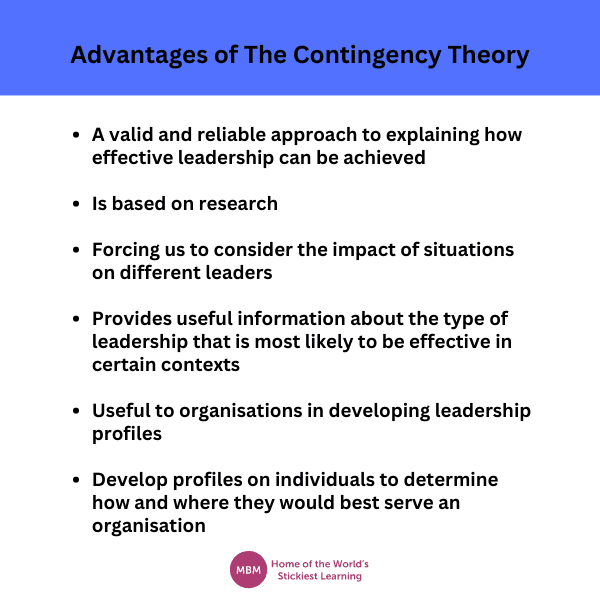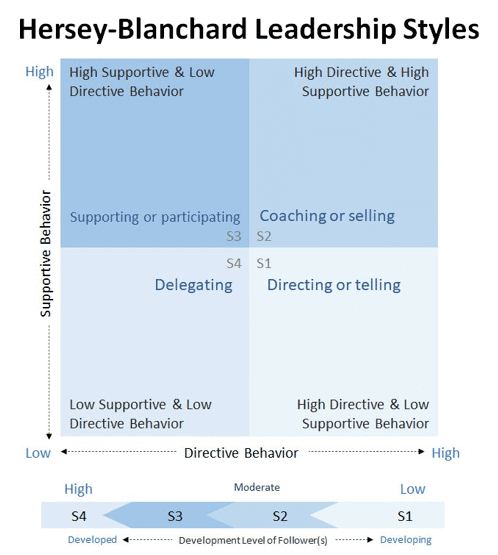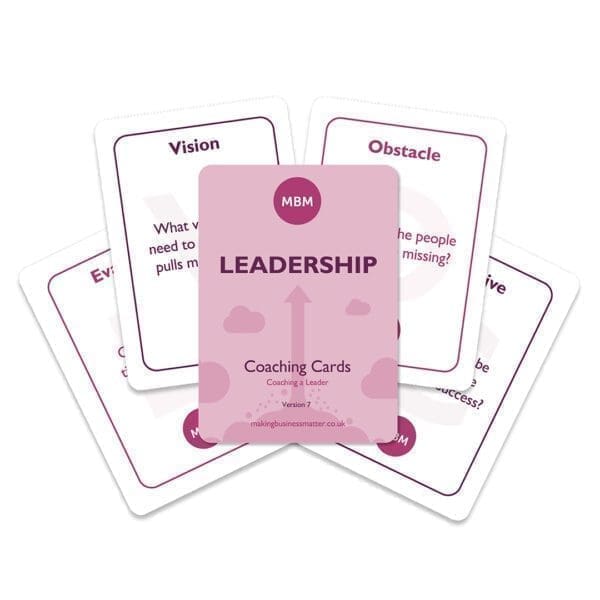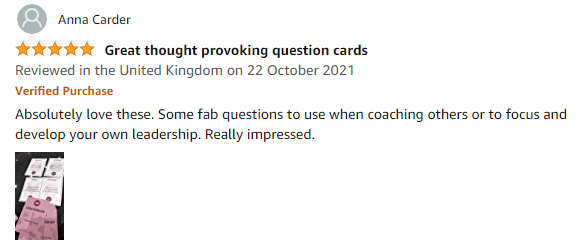There is no “one key” that can open “all doors”. There is always “one key” for “one door”
It’s all about creating the right key to open a specific door. Contingency theory will lead you to be the most productive and efficient manager in all situations.
Managers are professionals who lead, plan, organise, and direct control of resources to achieve company goals. Learning how to be an effective manager is a crucial thing for every professional. This skill could help you to increase your performance as a manager, and your team’s performance in general.
So how to do this? One of the best ways is by understanding the importance of Contingency theory in leadership roles.
All you need to do is pay attention.
As a manager, we need to understand that we can’t use only one approach in all situations. Therefore, a manager needs to use an analytical mindset to review common situations and set up a resolution method to deal with them. This methodology is well known as Contingency theory.
What is the Meaning of Contingency Theory?

Being a strong manager is all about running the business while producing effective or efficient work results. And, it is hard to achieve if you have only one approach to handle all situations. Above all, you need to adapt, analyse, and choose which approach is appropriate for the specific situation that you need to handle.
The contingency theory is one of the famous methodologies of leadership that can help you. Basically, this methodology explains that in order to become effective, a manager needs to adapt to the situation and use a specific approach to handle it.
Here’s an example every professional chef will know. Much like a chef’s secret recipe enhances the flavour profile of a specific meal, the application of contingency theory enables managers to elevate their effectiveness by tailoring their leadership style to the specific needs of their team and organizational context.
Now, it makes sense, right? So for a manager, it is important to understand a situation first and decide how to handle it. Avoid generalising and instead use a specific approach for a specific situation.
Let’s explore the Scientific Research by Blerona Shala, Abetare Prebreza, and Berim Ramosaj in 2021 about “The Contingency Theory of Management as a Factor of Acknowledging the Leaders-Managers of Our Time Study Case: The Practice of the Contingency Theory in the Company Avrios”. In conclusion, this research explains several major advantages of this contingency theory. The research tested it and found it to be a valid and reliable approach for explaining how effective leadership can be achieved by implementing contingency theory.

What Are the 4 Types of Contingency Theory?
The important point of the contingency theory is that there is no “single best approach” to handle all company’s situations. So, it’s crucial you remember this in order to have good skills in this area. A manager needs to take a deep look on what is the real purpose of contingency theory and how important it is for your professional life.
There are four famous methodologies inside this contingency theory and we will discuss them here. While it could seem they are similar on the surface, they each offer advantages for different situations.
#1 – Fiedler’s Contingency Theory

The very first contingency theory was developed by Fred E, Fiedler. He is one of the leading researchers of industrial organisational psychology in the 20th century. Fiedler’s Contingency Theory states that the effectiveness of a leadership methodology is determined by how well your approach style matches the situation.
You probably realise now that Fiedler’s Contingency Theory is pretty simple. It talks about a specific method of leadership style or approach for a specific situation. Generally, there are two elements of Fiedler’s contingency theory, Natural Leadership Style, and Situational Favorableness.
1. Natural Leadership Style:
In the context of this theory, to help managers determine their leadership style, Fiedler provided an LPC or Least Preferred Coworker. Above all, this scale can help you to understand your specific leadership style as a manager. It includes a list of categories that you need to score and the result number will represent the type of your leadership style based on this category.

You can see from the illustration above, that most of the managers with high scores of above 70, are considered as high LPC leaders and have a big tendency to have a relationship-oriented leadership style. On the contrary, managers with low scores of below 50, are considered low LPC leaders and have a big tendency to have a task-oriented leadership style.
2. Situational Favorableness:
The next step, after a manager discovers their leadership orientation style, is Situational Favorableness. This is the phase where a manager needs to understand the specific situation they face and how much control they have over it. Therefore, to determine this specific situation, Fiedler provided three variables.
- #1: Leader-member relations are talking about the degree of trust, respect, and how confidence a leader can work with their subordinates.
- #2: Task structure talks about clear instruction. Every manager needs to know that unclear tasks often will lead to confusion in carrying out responsibilities. That’s why a clear task needs to have information such as what to do, by when, and how to do it.
- #3: Leader Position Power is the authority that a manager has over the team. For example, if you have all the power to reward, punish or correct what your subordinates did, then it means your position power is high. The higher the power, the stronger the degree that the leader has to control the situation.
#2 – Situational Leadership Theory

Leadership style plays an important role in daily job activity. Actually, as a manager, it is crucial to know your own leadership style and then have the ability to develop it. In turn, this adaptable skill can allow you to communicate better and become more productive.
Situational Leadership Theory is a methodology of contingency theory which is also called the “Hersey-Blanchard model”. This theory suggests managers be able to have adaptability skills based on specific situations.
This methodology explains that there’s no “one best leadership style” for “all situations”, or in other words, there’s no single leadership style that is appropriate for all workplace situations. Based on the Situational Leadership theory, there are four different leadership types.
1. Delegating Style:
Delegating Style refers to a leadership style where a manager assigns projects or tasks to subordinates. It can be an excellent option when managers face a situation or a team with extensive experience and expertise.
2. Participating Style:
Participating Style is a leadership style where a leader involves the subordinates in the decision-making process. Sometimes it is called democratic leadership. Similarly, it aims to engage group members’ commitment to the company goals by increasing their participating portion.
3. Selling Style:
Selling Style is a strong leadership style that suits once a manager faces a difficult situation. Mostly the situation is where the subordinates are unwilling to do the job. This leadership style is unique, not inherent, and it develops with time and practice. As a manager, you can share clear expectations and work guidance, then closely monitor the job progression.
4. Telling Style:
Telling Style is a leadership method that is using a lot of directive approaches and authority styles. It is mostly used for new employees who required direct instruction. Or, it can be also used at a company with high-risk jobs, such as an electrical company.

Let’s consider SageJournals by Gelmar García Vidal, Reyner Pérez Campdesuñer, Alexander Sánchez Rodríguez, and Rodobaldo Martínez Vivar in 2017 about “Contingency theory to study leadership styles of small businesses owner-managers at Santo Domingo, Ecuador”. In conclusion, the research explains that there are four variables in Situational Leadership.
These variables use maturity as the element of measurement. Maturity is defined, under the perspective of the situational approach, as the willingness and ability of a person to take responsibility for directing the behaviour, and the combinations of high and low levels on each dimension made results in four statuses that can be used to describe a person as follows:
- Individuals who are neither willing nor able to take responsibility.
- Individuals who are willing but not able to take responsibility.
- Individuals who are able but not willing to take responsibility.
- Individuals who are both willing and able to take responsibility.
#3 – Path-Goal Theory

The Path-Goal Theory of leadership says that a manager’s style and behaviour will influence the team’s productivity by helping the subordinates reach team goals. In other words, it is easy to learn and seems simple to implement. This is the next contingency theory that we will discuss here.
An effective leader based on this theory, will share a clear path of direction that can be followed by subordinates to achieve goals. There are four key types of leadership in this Path-Goal Theory.
1. The Supportive Leader:
The Supportive Leader focuses on how to develop and maintain a good relationship with subordinates. In this leadership style, the manager pays attention to the subordinates’ need and develop a friendly work environment. In this type of contingency theory, the style creates a good chance for the learning process while developing mutual respect and trust.
2. The Participative Leader:
The Participative Leader gives a chance for subordinates to participate in the decision-making process. Above all, this type of contingency theory shares more space for the subordinates to give their contribution. It enables the manager to get feedback and honest perception from subordinates’ perspectives.
3. The Directive Clarifying:
The Directive Clarifying leader provides subordinates with clear instructions about how to do a specific job. They also share the expectation, as well as how the job results will affect the company. This type of leadership is strong and aims to reduce confusion or unclear direction.
4. The Achievement-oriented Leader:
The Achievement-Oriented Leader focuses on the end goals. In this type of leadership, the manager will encourage the subordinates to do their best in every job or every situation. This is a contingency theory that is famous in many successful businesses. Because the manager keeps motivating the subordinate to do more and challenges them to achieve something that they can be proud of.
#4 – Decision-making Theory

Contingency theory tells us there is no universal approach that can handle all business situations. There is always an option to choose based on a specific situation. And one of them is Decision-making Theory. This type of leadership will help you to identify the best approach to take based on the current situation.
This kind of leadership is also known as The Vroom-Yetton model. There are five decision-making processes in the Decision-making Theory, and these processes are mentioned below for a better understanding of the differences.
1. The Autocratic (A1)
The leader makes the decisions using his own information and judgment, without coordinating them with subordinates.
2. The Autocratic (A2):
The leader actively makes decisions independently but passively coordinates them first with subordinates to gather more additional information.
3. The Consultative (C1):
The leader makes decisions after doing a personal consultation to gather every team member’s opinion before taking the final decision. The type of consultation here is an individual consultation, not a group discussion.
4. The Consultative (C2):
The leader makes decisions independently. However, before doing it, this leadership style will bring the team together for a group discussion to gather information.
5. The Collaborative (G2):
This is democratic leadership, where a leader gives the opportunity to the team to give contributions to the decision-making process.
Examples of This Theory for a Better Understanding
Let’s take a look at an example of a contingency theory based on each type.

1- Fiedler’s Contingency Theory Example
– What kind of leadership style from Fiedler’s Contingency Theory needs to be applied when a manager hires a new employee without any prior experience? The answer is a task-oriented leader. The reason is that this type of employee needs specific instruction about what and how to do the job.
2 – Situational Leadership Theory Example
– What kind of leadership style from Situational Leadership Theory do you apply when a general manager with a general education background has an employee with high expertise in the job field? In other words, this subordinate has more experience and expertise in his specific job.
Let’s say, you are a general manager of a five stars hotel with marketing background education. And your subordinate is a CFO or Chief Financial Officer. What kind of leadership style do you need to use with this subordinate?
The answer to both these is Participating Style. The reason is that you need the employee’s expertise and judgment in the decision-making process. And it will be a wise decision to include the employee and apply the participating style method in this kind of situation.
3 – Path-Goal Theory Example
– What kind of leadership style from Path-Goal Theory should you apply when a manager from a famous global fried chicken brand gets a new monthly target from the head office company? The answer is The Achievement-Oriented Leadership style. This leadership style is strong and great for this type of situation. The reason is that the manager can keep motivating the subordinate to do their best and challenge them to achieve the company goals no matter what happens.
4 – Decision-Making Theory Example
– What kind of leadership style from Decision-making Theory needs to be applied when a manager from the head office with excellent experience gets promoted to a branch office for a higher position? But, wait, there’s more. He needs to face a management crisis and a high-stress environment where most of the subordinates do not have enough expertise for their position.
The answer is The Consultative (C2). The reason is that a manager with this leadership style who has an excellent background of knowledge and experience is always capable to make independent decisions in a specific case like this. However, the manager will set up a group discussion first in order to gather information from subordinates’ perspectives.
Strategies and Tips to Choose a Leadership Style in Contingency Theory

Nowadays, there are many types of leadership styles proposed by various experts in company management theory that rely on contingency theory. Each leadership style represents the key elements that need to be considered first before choosing which leadership style will match the specific situation. Those elements could be the tasks requirement and subordinates’ background history.
There are some tips and strategies that can be used in order to choose the right leadership style, and you can view some of them below:
First, Identify Your Original Character
It is important to know your character first. If you are an extrovert then you can choose a leadership style centred around a leader-team relationship. And if you are an introvert, then you can choose a leadership style based on task-oriented.
Second, Measure Your Level of Experience and Skills
Generally, your level of experience and skills are better or higher than your subordinates. In this situation, you can choose based on your general needs. However, if there’s a member on your team that has better experience and skills, than regarding skills and experience we suggest personally coordinating with them first before making a decision.
Third, Identify Your Subordinate Character
Subordinate characters are very varied. It will be okay if they are a good team member, you will be okay to choose a leadership style freely. However, if they are a type of trouble maker then we suggest you choose a leadership style based on task-oriented where you can give clear instructions and can monitor them closely.
Fourth, Identify Your Subordinate Level of Experience and Skills
As we mentioned before that the subordinate level of experience and skills will need to consider once they have higher than yours. A leadership style that explores open discussion practice will be wise to choose.
Fifth, Analyse the Situation
The specific situation that you need to face is important to analyse. There are two conditions that need to analyse. If you are a new manager or in a new workplace environment then we suggest using a leadership style that explores open discussion options. However, above all, we always suggest you as a manager use a leadership style that gives you the opportunity to make the decision independently even though you use an open discussion leadership style to gather as much information as you can get.
This is it for today’s article!


>> Leadership Skills Coaching Cards <<
Ready to unlock new professional opportunities and expand your network? Connect with us on LinkedIn and let’s take your personal development to new heights!




